As a homeowner, you may be wondering if it’s possible to replace half of your roof at a time. Perhaps you’re considering a partial roof replacement to save on costs or to address specific problem areas. But is it a viable option? In this section, we’ll explore the possibilities, benefits, and drawbacks of replacing your roof in stages.
Before making any decisions, it’s crucial to assess the condition of your roof and determine if a partial replacement is feasible. You’ll also need to find a reliable roofing contractor to execute the project and plan accordingly for proper execution. We’ll guide you through all the necessary steps and considerations.
Key Takeaways:
- Partial roof replacement can be a viable option for homeowners looking to save on costs or address specific areas of concern.
- Assessing the condition of your roof and finding the right roofing contractor are crucial steps in the process.
- Proper planning and execution are essential for a successful partial roof replacement.
Understanding Partial Roof Replacement
If you’re considering a partial roof replacement, it’s essential to understand what the process entails. Partial roof replacement involves replacing only a portion of your roof rather than the entire structure. This option is suitable when the damage to your roof is localized in one area or when replacing the entire roof is not feasible due to budget constraints.
During a partial roof replacement, the roofing contractor will inspect your roof to determine the extent of the damage and the areas that require replacement. The contractor will remove the damaged section and replace it with new materials that match the existing roof as closely as possible. This process allows you to address specific problem areas while avoiding the expense and disruption of a full roof replacement.
Partial roof replacement is a complex process that requires the expertise of a professional roofing contractor. You should only trust a licensed, experienced roofing contractor to handle your partial roof replacement. This ensures that the project is completed safely, efficiently, and to your satisfaction.

Understanding the process of partial roof replacement is essential before deciding if this is the right option for your home.
Assessing the Condition of Your Roof
If you’re considering partial roof replacement, it’s crucial to assess the condition of your roof beforehand. Not all roofs are good candidates for partial replacement, and some may require a full replacement to ensure optimal performance and longevity.
Roof replacement is recommended if your roof has sustained significant damage, such as leaks, missing shingles, or severe wear and tear. Partial roof replacement may be feasible for roofs with minor damage or localized issues that only affect a portion of the roof.
Consult with a roofing contractor to evaluate the condition of your roof and determine the best course of action. They can identify any underlying issues, such as structural damage, that may not be visible to an untrained eye.
Keep in mind that partial roof replacement may not be a viable option if your roof is nearing the end of its lifespan. In this case, investing in a full roof replacement may be more cost-effective in the long run.

Regular roof maintenance, such as cleaning and inspections, can also help extend the life of your roof and prevent the need for premature replacement or repairs. It’s recommended to schedule a roof inspection at least once a year, or after a major weather event, to catch any issues early on and prevent costly damage.
Benefits of Partial Roof Replacement
Partial roof replacement has several advantages over a full replacement. First and foremost, it can save you money. By replacing only the damaged or worn-out section of the roof, you can avoid the cost of a full replacement, which can run into the tens of thousands of dollars.
Another benefit of half roof replacement is reduced disruption. With a full roof replacement, you may need to vacate your home or business for several days. Partial replacement, on the other hand, can often be completed in just a day or two, minimizing the impact on your daily routine.
Additionally, partial roof replacement allows you to address specific problem areas. If only one section of your roof is damaged, you don’t need to replace the entire roof. This approach can be particularly useful if you’re on a budget or planning to sell your property in the near future.
Finally, replacing your roof in stages can be a good option if you’re planning to make other home improvements in the future. This way, you can prioritize the most critical repairs and renovations, ensuring you’re making the most of your budget.
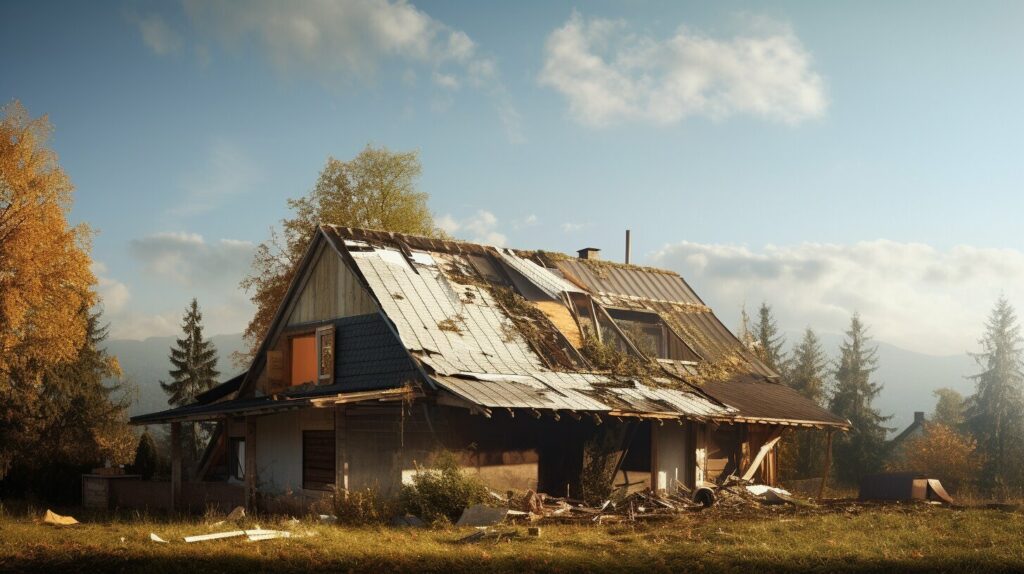
Of course, there are some downsides to consider as well, which we’ll explore in the next section.
Potential Drawbacks of Partial Roof Replacement
While there are several benefits to opting for a partial roof replacement, there are also potential drawbacks to consider. Here are some factors to keep in mind:
Aesthetic Differences
Replacing only half of your roof can result in visible differences in color, texture, and style between the old and new sections. This discrepancy can be especially noticeable if you have an older roof or if you’re planning to sell your home in the near future. Discuss any aesthetic concerns with your roofing contractor before proceeding with a partial replacement.
Compatibility with Existing Materials
If you’re planning a partial roof replacement, you need to ensure that the new materials are compatible with the existing ones. Roofing contractors will have different materials, and it can be tricky to match them to your older roof. Using similar materials can prevent potential leaks or other issues.

The Need for Future Maintenance
Partial roof replacement may only address the immediate problem areas, but other sections of the roof may need attention in the near future. Depending on the condition of the existing roof, it may be more cost-effective to replace the entire roof instead of tackling issues as they arise. Work with your contractor to develop a long-term maintenance plan for your roof.
By weighing the potential drawbacks against the benefits, you can make an informed decision about whether partial roof replacement is right for your home.
Finding a Reliable Roofing Contractor
When it comes to partial roof replacement, finding a trustworthy and skilled roofing contractor is crucial. A reputable contractor will ensure that your project is completed efficiently, effectively and within budget. Here are a few tips for finding the right professional for your roof replacement:
- Conduct Research: Start by researching potential roofing contractors in your area. Look for reviews and ratings from previous customers to gauge their level of expertise and customer service.
- Check Licensing and Insurance: Always ensure that the contractor is licensed and insured in your state. This protects you and your property in case of any accidents or damages during the project.
- Verify Experience: Look for contractors with extensive experience in partial roof replacement. This can give you confidence that they have the skills and knowledge necessary to handle your project.
- Get Multiple Quotes: Obtain quotes from at least three different contractors and compare them. This will help you to determine a fair price for your project and avoid being overcharged.
- Ask for References: Request references from the contractor and follow up with them. This will give you a firsthand account of their work quality and reliability.
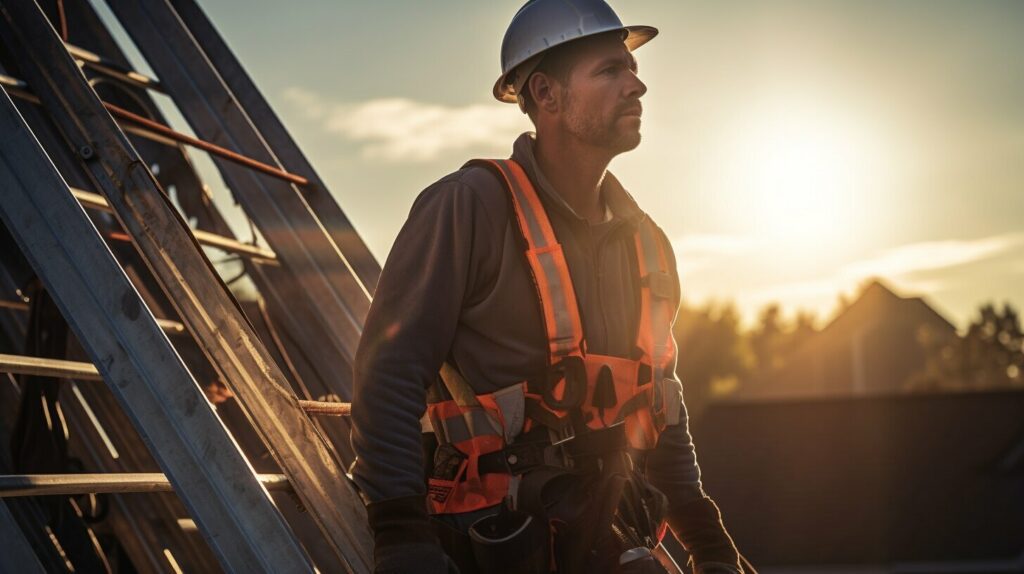
“Choosing a reliable contractor is crucial for the success of your partial roof replacement project.”
Planning and Executing a Partial Roof Replacement
If you’ve decided that partial roof replacement is the right choice for your roofing project, it’s essential to plan and execute the project correctly. Proper planning and coordination with your roofing contractor will help ensure a successful and efficient replacement process.
Replacing roof in stages involves several steps, including:
- Obtaining any necessary building permits
- Coordinating with your roofing contractor to schedule the replacement
- Preparing the work area, including protecting any landscaping, outdoor furniture, or other items near the replacement area
- Removing the existing roofing material
- Inspecting the roof deck and replacing any damaged areas
- Installing new underlayment and flashing
- Installing the new roofing material
It’s crucial to work with a reputable roofing contractor to ensure that the replacement process is done correctly and efficiently. Your contractor should be experienced in partial roof replacement and have a proven track record of successful projects.
Your roofing contractor will work with you to schedule the replacement according to your timeline and budget. It’s essential to communicate any specific needs or concerns with your contractor to ensure that the project is completed to your satisfaction.

Comparison: Partial Roof Replacement vs. Full Roof Replacement
Deciding between partial roof replacement and full roof replacement requires careful evaluation of the pros and cons of both options. Partial roof replacement, also known as replacing your roof in stages, can be less expensive and less disruptive than a full replacement. With partial replacement, you can address specific problem areas while retaining the intact portions of your roof. This can extend the lifespan of your roof and help you avoid the cost of a full replacement.
However, partial roof replacement can result in aesthetic differences, especially if the new roofing materials do not match the existing ones. It can also be challenging to ensure compatibility between the old and new materials, which may affect the overall performance of the roof system. Additionally, future maintenance, such as re-roofing the remaining portion, will require careful coordination and may impact the cost savings of partial roof replacement in the long run.
On the other hand, full roof replacement involves removing the entire roof and replacing it with brand new materials. This can provide a fresh start, avoid aesthetic inconsistencies, and ensure consistent performance of the entire roof system. However, full replacement can be more expensive and require more time and labor to complete. It can also be more disruptive to your daily routine.
In summary, partial roof replacement may be a better fit if budget and disruption are primary concerns, and if your roof is a good candidate for partial replacement. Full roof replacement may be necessary if your roof is beyond repair or if you want to ensure consistency and uniformity in your roof system. Consulting with a professional roofing contractor can help you make the right decision for your needs.
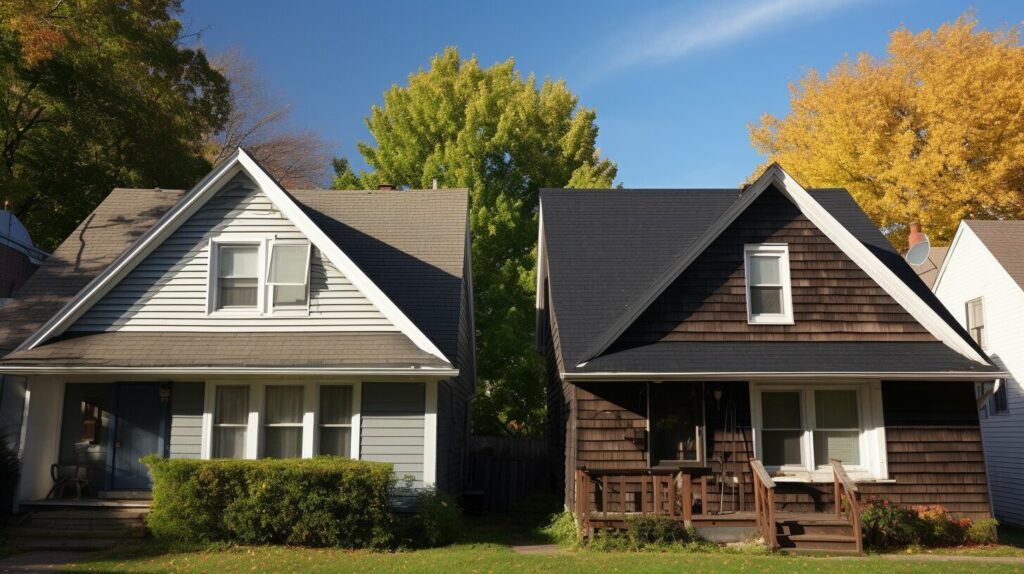
Cost Considerations for Partial Roof Replacement
When considering a partial roof replacement, cost is a significant factor to keep in mind. While it may seem more cost-effective than a full replacement, there are still expenses to consider.
The cost of a half roof replacement will depend on several factors, including the size of the affected area, your location, and the roofing materials used. On average, a partial roof replacement can cost between $2,000 and $10,000, compared to $5,000 to $12,000 for a full roof replacement.
Another cost consideration is that partial roof replacement may not be covered by your homeowner’s insurance policy. Insurance companies typically cover full roof replacements but may not cover partial replacements. It’s essential to consult with your insurance provider to understand your coverage.
It’s also worth noting that while partial roof replacement may appear more cost-effective in the short term, it may not be the most economical option in the long run. If the unaffected portion of your roof is nearing the end of its lifespan, it may need to be replaced soon, resulting in additional costs down the line.
Ultimately, the cost of a partial roof replacement should be weighed against the benefits and drawbacks discussed in this article, as well as your specific needs and budget.
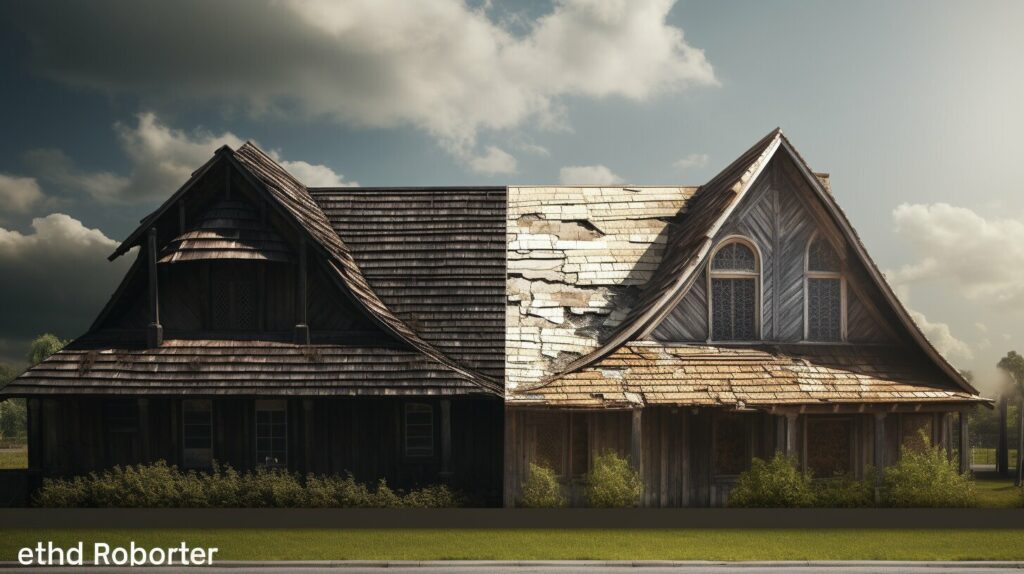
Maintaining and Extending the Lifespan of Your New Roof
Now that your partial roof replacement is complete, it’s essential to take steps to maintain and extend the lifespan of your new roof. By doing so, you can maximize your investment and ensure your roof provides reliable protection for years to come.
Regular Inspections
Even with proper maintenance, your roof can still sustain damage over time. To catch issues early on, we recommend scheduling regular inspections with a qualified roofing contractor. Professional inspections can help identify small problems before they escalate into larger, more expensive issues.
Cleaning and Gutter Maintenance
Keeping your roof and gutters clean is crucial for maintaining its integrity. Regularly clearing debris and leaves from your gutters can prevent water from backing up onto your roof and causing leaks. If you notice any debris or mold on your roof, we recommend hiring a professional to clean it off as soon as possible.
Repairing Damage Quickly
If you notice any damage to your roof, such as missing shingles or cracks, it’s essential to address the issue quickly. Waiting too long to make repairs can result in more extensive damage and higher repair costs.
Investing in Energy-Efficient Upgrades
Upgrading your roof with energy-efficient materials can help lower your energy bills and reduce your carbon footprint. Consider investing in cool roofing materials or improving your attic insulation to make your home more energy-efficient.
| Benefits of Regular Maintenance | Drawbacks of Neglecting Maintenance |
|---|---|
|
|
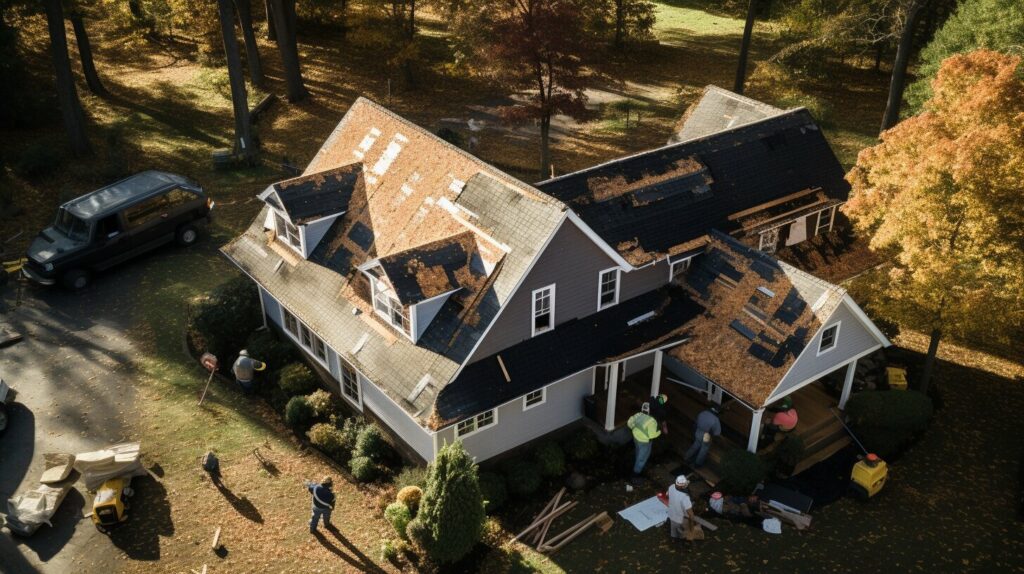
By following these maintenance tips, you can help ensure your partial roof replacement provides the protection and longevity you expect. Remember, a little bit of preventative maintenance goes a long way!
Environmental Considerations of Partial Roof Replacement
When considering a roofing project, it’s essential to think about the potential environmental impact. Partial roof replacement can offer eco-friendly benefits compared to a full replacement.
Firstly, partial roof replacement can minimize waste generation by reducing the amount of old roofing materials that end up in landfills. Additionally, replacing only the problem areas of your roof can save energy and resources that would have been used in a full roof replacement.
Partial roof replacement can also contribute to the sustainability of your home. Energy-efficient roofing materials can reduce your carbon footprint and lower your energy bills. By choosing eco-friendly materials, you can make a positive impact on the environment while also saving money.

Furthermore, installing solar panels during the partial roof replacement process can significantly increase the sustainability of your home. Solar panels can generate clean, renewable energy, reducing your reliance on fossil fuels and decreasing your carbon emissions. Not to mention, solar panel systems can increase the value of your home and provide long-term cost savings.
When selecting a roofing contractor for your partial roof replacement project, be sure to ask about their experience with eco-friendly practices and materials. A reputable contractor can guide you through the eco-friendly options available and help you make the best decision for your home and the environment.
Making the Right Decision for Your Roof
After exploring the possibilities, benefits, and drawbacks of partial roof replacement, you’re probably wondering if it’s the right decision for your roof.
Weighing the Pros and Cons
As mentioned in earlier sections, partial roof replacement can save you money, minimize disruption, and address specific problem areas. However, it’s essential to consider the potential aesthetic differences, compatibility with existing roofing materials, and the need for future maintenance.
Assessing Your Budget and Future Needs
Your budget, long-term plans for your home, and future maintenance needs are all factors to consider when deciding between partial roof replacement and full roof replacement. If you’re planning to sell your home in the near future, a full replacement may be a better option to increase its value.
Consulting with a Roofing Contractor
A reliable and experienced roofing contractor can help you determine the best course of action for your roofing project. They can assess the condition of your roof, provide recommendations, and offer a detailed estimate of the cost and timeline for the project.
Conclusion
Ultimately, the decision to replace half of your roof at a time depends on various factors. Weighing the pros and cons, assessing your budget and future needs, and consulting with a roofing contractor will help you make an informed decision.
Whatever you decide, make sure to prioritize proper maintenance to ensure the longevity of your roof. Good luck with your roofing project!
FAQ
Q: Can I replace half of my roof at a time?
A: Yes, it is possible to replace half of your roof at a time. This approach, known as partial roof replacement, allows you to address specific problem areas without replacing the entire roof.
Q: What is partial roof replacement?
A: Partial roof replacement involves replacing a portion of your roof, typically half, while leaving the other half intact. This approach can save you money and minimize disruption compared to a full roof replacement.
Q: How do I assess the condition of my roof?
A: Before considering partial roof replacement, it’s important to assess the condition of your roof. Look for signs of damage, such as leaks, missing shingles, or sagging areas. Consulting a roofing contractor can help you determine if partial replacement is suitable.
Q: What are the benefits of partial roof replacement?
A: Partial roof replacement offers several advantages. It can save you money compared to a full replacement, reduce disruption to your home or business, and allow you to address specific problem areas without replacing the entire roof.
Q: Are there any drawbacks to partial roof replacement?
A: While partial roof replacement has its benefits, there are some potential drawbacks to consider. Aesthetic differences may be noticeable between the new and existing roof portions, compatibility with existing roofing materials should be considered, and future maintenance may be required for the remaining roof sections.
Q: How can I find a reliable roofing contractor?
A: When opting for partial roof replacement, it’s important to choose a reliable and experienced roofing contractor. Seek recommendations from friends, family, or neighbors, and do thorough research on potential contractors. Look for licensing, insurance, and positive customer reviews.
Q: What are the steps involved in planning and executing a partial roof replacement?
A: Proper planning and execution are crucial for a successful partial roof replacement. Obtain necessary permits, coordinate with your roofing contractor, and schedule the project in advance. Ensure clear communication and understanding of the scope of work and timeline.
Q: How does partial roof replacement compare to full roof replacement?
A: Partial roof replacement and full roof replacement are different options with their own considerations. Partial roof replacement allows you to address specific areas, saving you money and minimizing disruption. Full roof replacement is necessary when the entire roof is damaged or nearing the end of its lifespan.
Q: What are the cost considerations for partial roof replacement?
A: The cost of partial roof replacement depends on factors such as the size of the area being replaced, the roofing material chosen, and the extent of any additional work required. It’s important to obtain quotes from roofing contractors and budget accordingly.
Q: How can I maintain and extend the lifespan of my new roof?
A: After your partial roof replacement, proper maintenance is essential for longevity. Regularly inspect your roof, clean debris, and address any issues promptly. Consider scheduling periodic inspections by a roofing professional to catch potential problems early.
Q: What are the environmental considerations of partial roof replacement?
A: Partial roof replacement can have environmental benefits. It reduces waste compared to full roof replacement and can improve energy efficiency with the use of modern roofing materials. Additionally, sustainable roofing options may be available, such as recycled materials or solar panels.
Q: How can I make the right decision for my roof?
A: When deciding between partial roof replacement and full roof replacement, consider factors such as the condition of your roof, budget constraints, and future needs. Consult with a roofing professional to assess your options and make an informed decision that suits your specific circumstances.